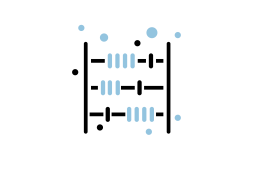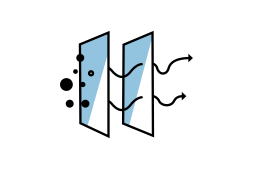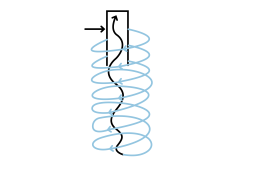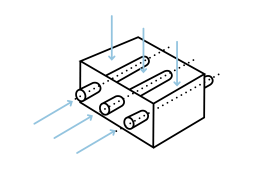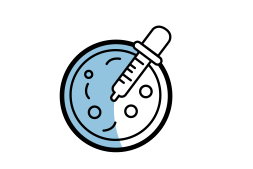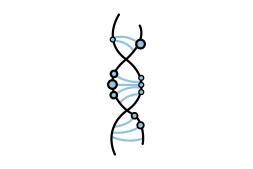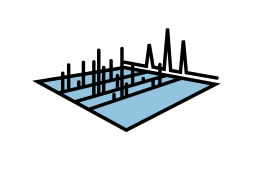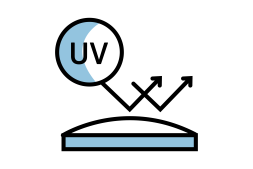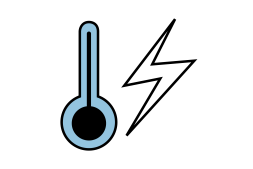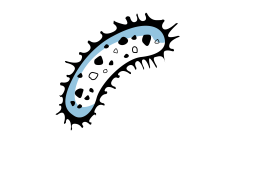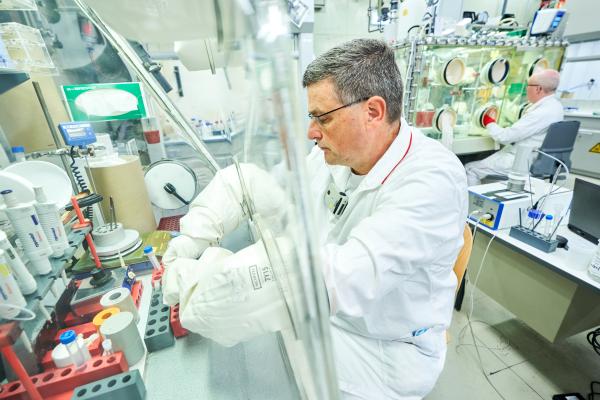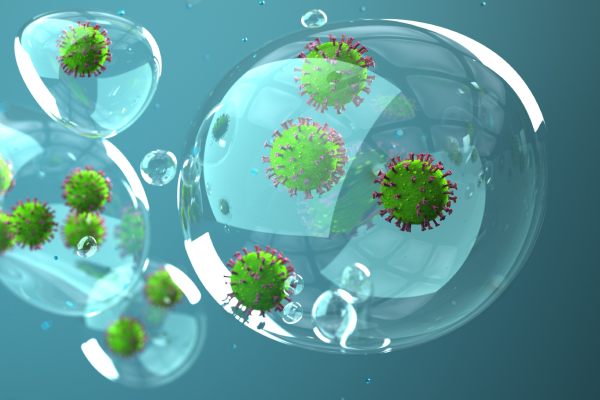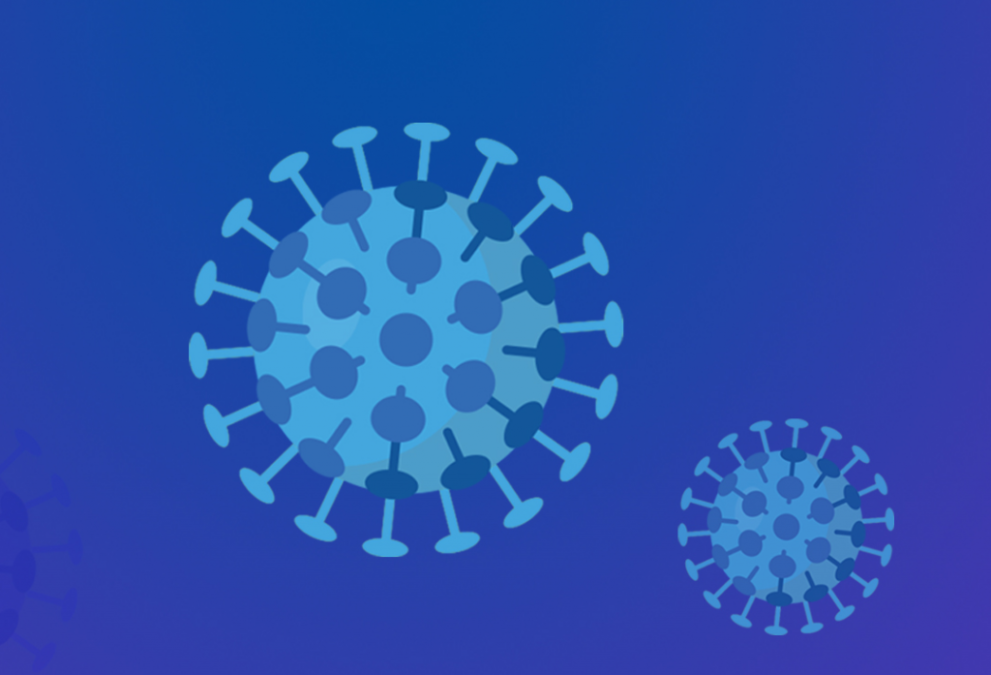
During the COVID-19 pandemic, most of us made a rather intimate acquaintance with some of these technologies. And many of us are still confused about exactly how they work and what are the mechanisms behind them.
This JRC explainer helps you better understand the technologies that are established, but also those that are emerging: a peek into the future, for being better prepared for the next reappearance of an airborne disease.
In a separate article about a JRC-HERA study, we tell you what an expert group employing the JRC foresight process tipped to be the most impactful technology, and delve into the trade-offs involved in deploying these technologies.
Detection technologies
Particle counters
The condensation particle counter type relies on aerosol – particles floating through the air – getting pressed through a laser beam. Based on the obstacles they create for the beam, their sizes are measured one by one.
Advantage: the results are seen immediately and can be obtained with a cheap hand-held device. They can tell us how clean a room is in terms of ultrafine particles
Drawback: it cannot tell what the particles exactly are, if they are of biological or non-biological nature. For that, other detection technologies are needed
Soundbite: a good first step. The increase of particles of a certain size can give us a general hint whether the concentration of a pathogen, an organism carrying disease, is on the up
Filters
Particles travelling in the air get stuck on the barriers made up by filters.
Advantage: They can work with huge amounts of air, up to 1000 litres per minute. They are cheap and also efficient in preventing the spreading of germs
Drawback: they collect the particles, but cannot tell what they are. They can also denature particles, which means that the molecular structure of pathogens gets changed, making detection more difficult
Soundbite: turn to them for preventing germs from spreading and for collecting them, but concrete detection must be left to other technologies
Cyclonic and impactor aerosol samplers
In the cyclonic type, particles in a stream of air are channelled by a centrifuge to crash onto a collection wall. Impactor ones are based on the same principle, but use different geometry
Advantage: can collect a large sample quickly. It costs little and is straightforward to use
Drawback: like filters, they often denature particles, meaning that detection is left to technologies that can recognise pathogen debris. They do not work very well with small particles
Soundbite: quick collection of particles, but no detection
Condensation aerosol samplers
In a condensation tube, a droplet of water forms around the particles, making them fall onto a surface, ready to be collected
Advantage: as opposed to other sampling methods, it is more gentle and keeps the molecular structure of particles intact
Drawback: slow, bulky, and requires specialist skills to operate. It only collects particles, does not identify them
Soundbite: if you have time on your hands and not destroying small pathogens is important, condensation aerosol samplers could be your choice
Cell cultures
This tried-and-tested method involves leaving aerosols in an environment with favourable conditions for a longer period of time and checking the result
Advantage: can detect certain pathogens, although its efficiency has its limits, with sample contamination and oversampling threatening to mess up the results
Drawback: it takes days to obtain a result and only works with samples that were not denatured. It also requires a lab environment
Soundbite: this is the method that you probably saw and experienced back in school. It might not be the future of detecting airborne pathogens though
Nucleic acid amplification (NAA)-based techniques
The now famous polymerase chain reaction (PCR) test relies on this technology. Primers, short stretches of nucleic acid, are used to bind the DNA of the particle to be identified. The number of DNA copies is then doubled several times in repeated thermal cycles. The quantity and size of DNA pieces are then checked thanks to an electric current
Advantage: the gold standard for pathogen analysis. Thanks to amplification, it can identify even small quantities of a pathogen with ultra-high efficiency
Drawback: the genomic sequence of pathogens has to be known beforehand, so it is not suitable for identifying entirely new germs. Obtaining a result can take hours, if not days. It is costly and requires specialised operators
Soundbite: as the benchmark in detection, NAA-based techniques are here to stay, but require some development to be suitable for quick on-site diagnosis
Direct identification through physico-chemical properties
For example, spectroscopy (which looks at how split light and matter interplay) and spectrometry (which gives quantitative measurements of such interplay) can help spot pathogens thanks to the differences in the biochemical make-up of these, benefitting from the observation that all molecules emit and absorb light at their own unique wavelengths
Advantage: if it works, it could be real-time, automated, and reliable, acting as an early warning tool
Drawback: often the differences in biochemical properties are very subtle, requiring advancements in artificial intelligence and algorithms to perceive patterns in them
Soundbite: a call from the future. If artificial intelligence learns enough, in the future this set of technologies can be a game-changer in the early detection of epidemics
Biosensors
This covers a host of technologies relying on a part of the pathogen binding with a bio-receptor such as an antibody. The lateral flow assay, widely known during the COVID-19 pandemic as the rapid test, is based on such a technology. If the pathogen is present, the sample liquid absorbed by the test paper will react to the antibodies built into the paper, and a positive test line will appear.
Advantage: Generally low-cost and simple to use
Drawback: sensitivity (the ability to spot when a pathogen is present) is often lower than that of NAA-based techniques. It usually requires that the pathogen is intact
Soundbite: use this if you want a quick idea, but if you want to play it safe, go for an NAA-based technology. Some very promising biosensors are still in research labs, they can be the technology of the future
Sequencing technologies
Next-Generation sequencing and protein sequencing can reveal the genetic and proteomic composition of samples, meaning that they can show us the order of the four building blocks in the pathogen molecules and tell us more about the proteins in them
Advantage: they provide a wealth of information on pathogens
Drawback: requires a lab to perform, it is expensive and can take weeks
Soundbite: provides the most detailed image, but has severe limitations
Decontamination technologies
Filtration / Ventilation
This well-established technology works by capturing particles in an airflow by filters made of materials such as activated carbon fibre or polypropylene fibre
Advantage: it is highly efficient in collecting larger particles, can be used simply and easily, and is already part of many building designs. It was found by experts to be the most impactful in fighting airborne pathogens
Drawback: filters require regular replacement. Otherwise, germs can gather on them and can become sources of contamination
Soundbite: simple and conventional, ventilation and filtration go a long way in getting rid of pathogens. You can do a lot by just opening a window
UV radiation
Ultraviolet (UV) radiation is a time-tested method for sterilising surfaces. It works by damaging the genetic material of pathogens
Advantage: it is indeed very efficient against viruses and bacteria
Drawback: at certain wavelengths within the UV range, it can damage human skin and eyes, or it can create ozone, which is harmful to humans. It has limited use against spores
Soundbite: very good at cleaning objects, but be careful of exposing humans to it and remember, it does not work from behind the corner, the UV radiation must directly shine on the pathogen
Electrostatic capture
Particles are exposed to a strong electric field, making them settle on a collection layer
Advantage: it can be integrated into HVAC (Heating, Ventilation, and Air Conditioning) filtering and employed without interrupting building use
Drawback: it can take a while to reduce contamination with this technology. It also uses quite some electricity
Soundbite: not without advantages, but not very green
Thermal inactivation
By affecting cell structure and proteins, high heat is great at killing pathogens
Advantage: this technology is one of the most performant ones. Over 99% of bio-aerosols can be inactivated in 0.2 seconds by applying 350 ◦C
Drawback: generating this much heat uses up a lot of energy
Soundbite: bulletproof, but very wasteful of energy
Plasma-based inactivation (including ozone)
Plasma is matter so extremely hot that electrons are snatched from atoms, creating ions (charged atoms or molecules), UV photons, and neutral molecules (e.g. reactive oxygen species). These reactive chemical species come in contact with pathogens in the air, damaging their cells, DNA, and proteins. Ozone, a pale gas with strong oxidising traits, can similarly disrupt pathogens’ ability to survive
Advantage: it has high efficacy and it is compatible with HVAC filtration
Drawback: creating plasma discharges is expensive and for fighting pathogens, it must be done in a just-in-time manner. Ozone irritates the airways and the lungs
Soundbite: can be suitable in certain settings, such as the food industry
Chemical aerosolization
Aerosolization with chemical products, for example sodium hypochlorite (a chemical compound used in bleach), is an established method for disinfecting rooms as it can eliminate microorganisms
Advantage: thanks to its oxidising and hydrolysing (the breaking of chemical bonds) properties, aerosolization with sodium hypochlorite is very efficient in cleaning indoor environments. If used in a fogging system, it can even clean difficult-to-reach areas. It is also quite cheap.
Drawback: by-products are harmful to humans, so they must not be present without protective equipment when disinfection takes place. Getting rid of these by-products can take a lot of time and expenditure. It can corrode materials
Soundbite: chemicals are very effective against airborne pathogens, but if not dosed and handled correctly, they can kill not only germs
Microwaves radiation
Electromagnetic radiation with long wavelengths causes vibrations in pathogens, breaking their cell membranes
Advantage: easy-to-use, can be even integrated into mobile phones, and used in a plug-and-play manner. It requires little energy and has an efficacy of 90%
Drawback: although already commercialised, some more research and development is needed to fully exploit this technology
Soundbite: you could have an app for disinfecting personal space
Lysozyme-based bactericides
Lysozymes are enzymes that protect against microbes. They are present in the tissues and secretions of animals and plants, bolstering the immune system
Advantage: it is efficient and requires little energy
Drawback: the readiness of this technology is still in its infancy. Certain lysozymes can only fight certain bacteria
Soundbite: more research is needed to synthesise lysozymes that can be used against a broader range of pathogens and fully exploit this defence inspired by nature
Photocatalytic Oxidation
This technology combines the effects of light (photons) with catalytic oxidation (oxidation made faster by substances called catalysts). Light (for example UV radiation) interacts with a semiconductor (material especially suitable to control the flow of electric current) (usually titanium dioxide) in the presence of a photocatalyst (material that makes chemical reactions easier to occur). As a result, on the surface of the photoactive material, reactive oxygen species are created, that can – as in the case of plasma-based inactivation – disrupt the workings of pathogens
Advantage: this technology can be effective against substances that are normally difficult to decompose, it can be also deployed against airborne pathogens
Drawback: more research is needed as the fundamental mechanics of using photocatalysts for air disinfection are yet poorly understood
Soundbite: promising, but more research is needed to optimise it
Details
- Publication date
- 16 April 2024
- Author
- Joint Research Centre

